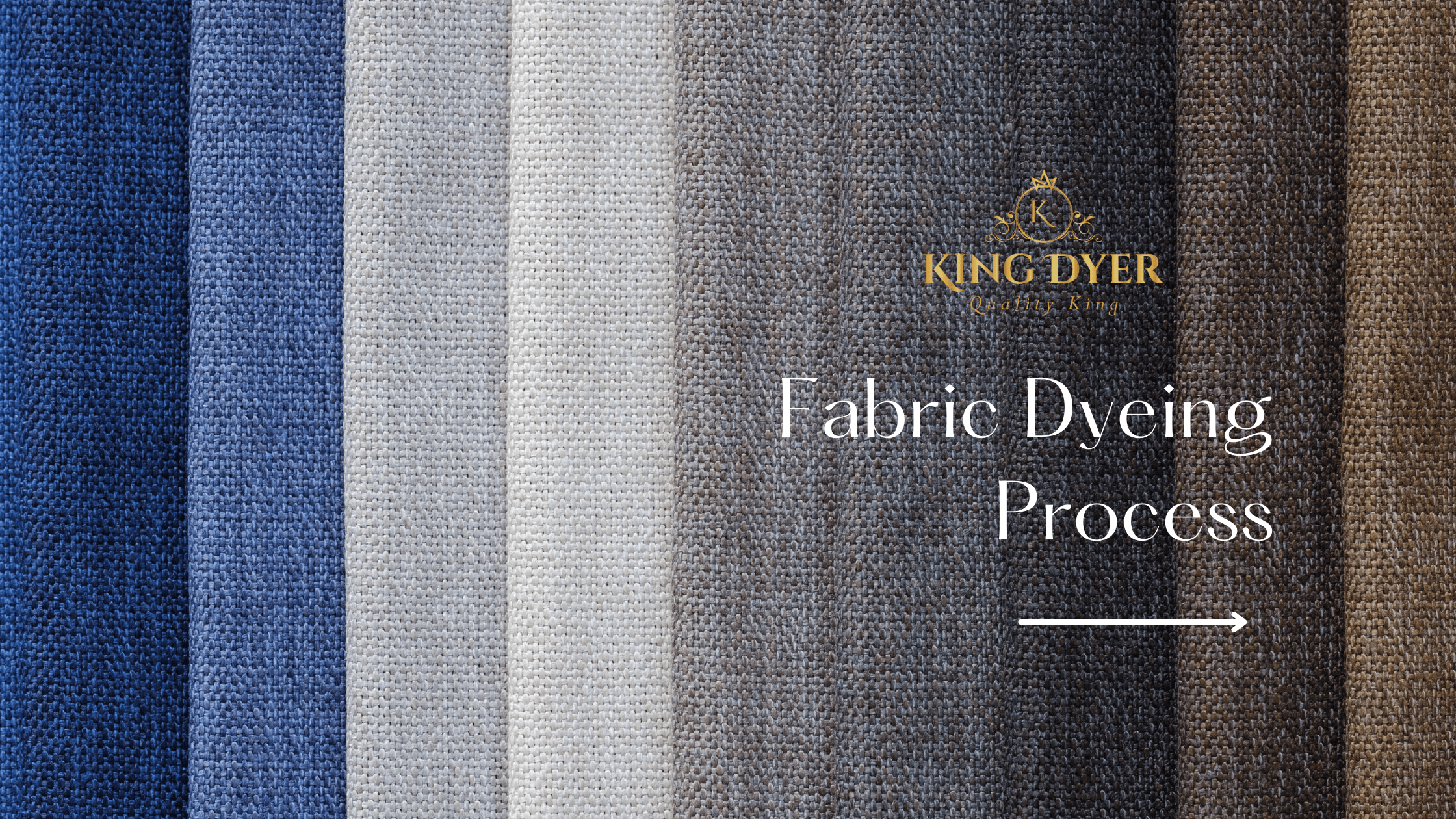If you have ever wondered how fabrics come in different colors,
Then you must have heard of the process called fabric dyeing. Fabric dyeing process of adding color to fabrics,
Which involves the use of dyes and chemicals. In this article,
We will take a closer look at the fabric dyeing process and everything you need to know about it.

What is Fabric Dyeing?
Fabric dyeing is a process of adding color to fabrics.
This process is done by using dyes that are applied to fabrics.
Dyes are substances that are used to add color to fabrics,
And they are available in different forms such as powder, liquid, and paste.
Table of Contents
Types of Fabric Dyeing
There are different types of fabric dyeing, and they include:
1. Direct Dyeing
Direct dyeing is a process of adding dye to the fabric without any intermediary agent.
This process is usually done by immersing the fabric in a dye solution.
2. Indirect Dyeing
Indirect dyeing is a process of adding color to fabrics by using a mordant.
A mordant is a substance that is used to fix dyes to fabrics.
3. Resist Dyeing
Resist dyeing is a process of creating a design on a fabric by using a substance that resists dye.
4. Tie-Dyeing
Tie-dyeing is a process of creating patterns on a fabric by tying it in a specific way before adding the dye.
Fabric Dyeing Process
The fabric dyeing process involves the following steps:
1. Preparation
The first step in the fabric dyeing process is the preparation of the fabric.
The fabric is washed to remove any impurities and then soaked in a solution of water and a detergent.
2. Dyeing
The fabric is then immersed in a dye solution.
The dye solution can be prepared by dissolving the dye in water or any other solvent.
The fabric is left in the dye solution for a specific period, depending on the type of dye and the desired color.
check proper water temperature before adding color
3. Rinsing
After the fabric has been dyed, it is rinsed to remove any excess dye.
Rinse at-least 3-4 times.
The fabric is rinsed in cold water until the water runs clear.
4. Fixing
The fabric is then fixed to ensure that the color does not fade.
This is done by using a fixative or a mordant.
The fixative or mordant is added to the dye solution or applied to the fabric after rinsing.
5. Drying
The final step in the fabric dyeing process is drying.
The fabric is dried either by hanging it or by using a dryer.
Factors Affecting Fabric Dyeing
Several factors can affect the fabric dyeing process. Some of these factors include:
1. Type of Fabric
The type of fabric used can affect the fabric dyeing process.
Some fabrics absorb dye better than others.
2. Type of Dye
The type of dye used can also affect the fabric dyeing process.
Some dyes are more suitable for certain fabrics than others.
3. Temperature
Temperature can affect the fabric dyeing process.
Higher temperatures can lead to faster dyeing, but they can also affect the quality of the color.

Fabric Dyeing History in India
Fabric dyeing has a rich history in India and dates back to ancient times.
The art of dyeing was traditionally done by hand, using natural dyes made from plants, flowers, and roots.
The use of natural dyes was not only sustainable but also had therapeutic and medicinal properties.
Indian textiles were prized for their vibrant colors and intricate designs,
Which were often used in clothing, home decor, and religious ceremonies.
The use of natural dyes was an important aspect of the textile industry and played a significant role in India’s economy.
Over time, synthetic dyes were introduced, which made the dyeing process faster and more efficient.
However, the use of natural dyes is still prevalent in some parts of India,
Particularly in rural areas where traditional methods of dyeing are still practiced.
Today, India is known for its exquisite fabrics and intricate designs,
Which are a testament to the country’s rich history and cultural heritage.
The use of natural dyes is making a comeback as people become more aware of the environmental impact of synthetic dyes,
And traditional methods of dyeing are being preserved and passed down to future generations.
Conclusion
Fabric dyeing is a process of adding color to fabrics. There are different types of fabric dyeing,
And they include direct dyeing, indirect dyeing, resist dyeing, and tie-dyeing.
The fabric dyeing process involves preparation, dyeing, rinsing, fixing, and drying. Several factors can affect
Read more About dyeing… wikipedia

